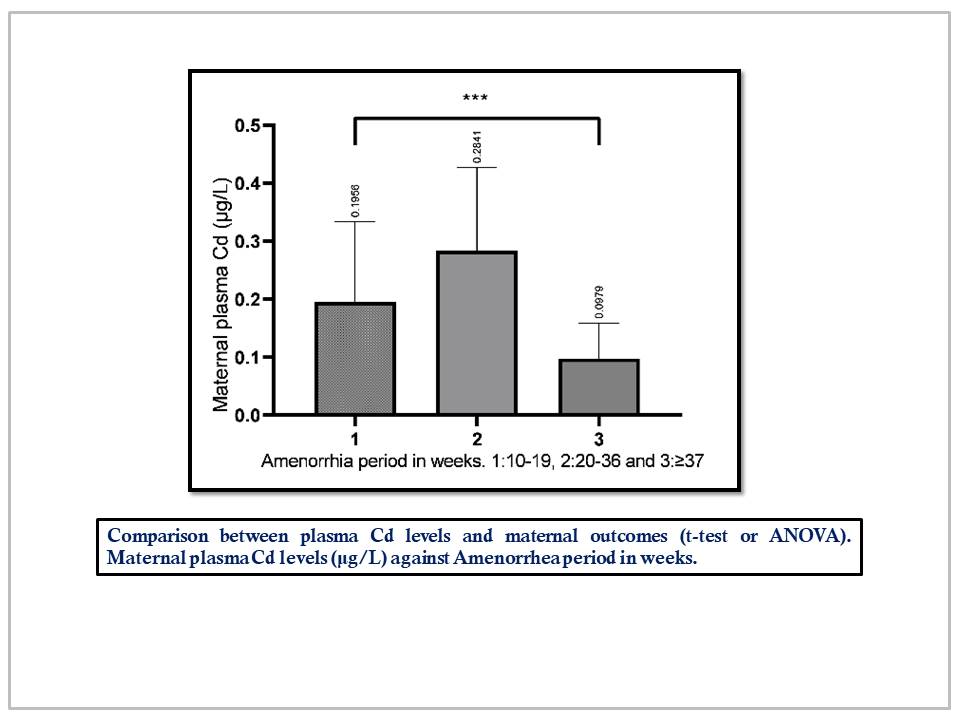Chemical Science & Engineering Research
Title
Evaluation of Plasma Cadmium Levels in Pregnancy and Outcome Implications, Kinshasa, DR Congo
Authors
Tuakashikila Y.,a Mata H.M.,a Kabamba M.M.,a Mashinda D.K.,b Mulaji C.K.,a Elongi JP.M.,c Malumba A.M.a and Tuakuila J.K.*a,d
aLaboratory of Analytical Chemistry and Environmental Toxicology, Faculty of Sciences, University of Kinshasa, Kinshasa, DR Congo.
bSchool of Public Health, Faculty of Medicine, University of Kinshasa, Kinshasa, DR Congo.
cGeneral Hospital of Kinshasa, DR Congo.
dFaculty of Health Sciences, University of Sherbrooke, Quebec, Canada.
*Corresponding author E-mail address: joel.tuakuila@unikin.ac.cd (Tuakuila J.K.)
Article History
Publication details: Received: 04th November 2022; Revised: 17th November 2022; Accepted: 17th November 2022; Published: 03rd December 2022
Cite this article
Tuakashikila Y.; Mata H.M.; Kabamba M.M.; Mashinda D.K.; Mulaji C.K.; Elongi JP.M.; Malumba A.M.; Tuakuila J.K. Evaluation of Plasma Cadmium Levels in Pregnancy and Outcome Implications, Kinshasa, DR Congo. Chem. Sci. Eng. Res., 2022, 4(11), 37-42.

Abstract
Although the most majority of Cd in whole blood is bound to red blood cells, the remaining Cd in the plasma represents the toxicologically active fraction for exchange with target tissues, including the developing fetus and the relevant index of health risks of Cd exposure. In whole blood, the evidence has been shown that prenatal exposure to Cd is associated with neurological dysfunctions, stillbirths, hypertension, spontaneous abortions, preterm birth, and reduced birth weight and birth size. The aim of this work was to evaluate plasma Cd levels in pregnancy and their birth outcomes implications. Plasma-Cd levels were measured by AA500FG-with graphite furnace in 396 pregnant women with 56 fetal-maternal clusters. For analysis, plasma samples were diluted quantitatively (1+10) with a matrix modifier solution containing 0.5% Triton X-100 (PA Sigma-Aldrich), 0.06% magnesium nitrate (98% PA Sigma-Aldrich) and 1% ammonium phosphate (1 mg/mL PO43-, Sigma-Aldrich). Levels of plasma Cd were observed in multiparous women with a family history of preeclampsia and diabetes mellitus (t-test, p=0.040, 0.0321 and 0.012, respectively). Plasma Cd levels were also significantly higher in in 20-36 weeks of amenorrhea period as compared to other periods [means (±SD), 0.284 μg/L (± 0.142) in 20-36 weeks, 0.195 μg/L (± 0.137) in 10-19 weeks and 0.097 μg/L (± 2.091) at delivery (≥37 weeks), ANOVA, p < 35 0.001] and newborns showed lower plasma Cd levels than their mothers [means (±SD), 0.012 μg/L (± 0.081) versus 0.226 μg/L (± 0.147), t-test, p < 0.001]. No significant associations were observed between maternal plasma Cd and birth weight (g), birth height (cm), ponderal index (g/cm3), Apgar score, head circumference at birth (cm) or gestational age at birth (weeks). Globally, maternal plasma Cd levels show no significant linear negative correlation to all of these outcomes (birth weight, birth height, ponderal index Apgar score, gestational age at birth, head circumference at delivery). However, multiparous women with a family history of preeclampsia and diabetes mellitus had significantly higher plasma Cd levels in this study. Furthermore, plasma Cd levels reported in Kinshasa constitute a major public health concern for pregnant women. Risk assessment of Cd exposure should take place in Kinshasa providing useful information and necessary 47 interventions for pregnant women to limit exposure to toxic metals.
Keywords
Plasma cadmium; Birth outcomes; Maternal outcomes; Prenatal exposure; Kinshasa